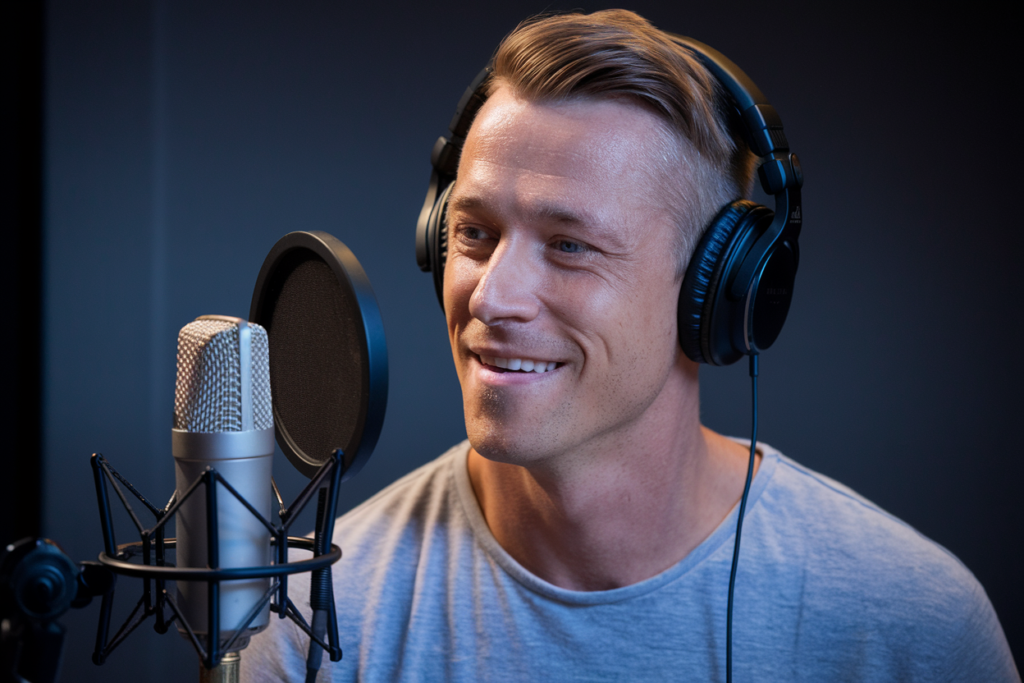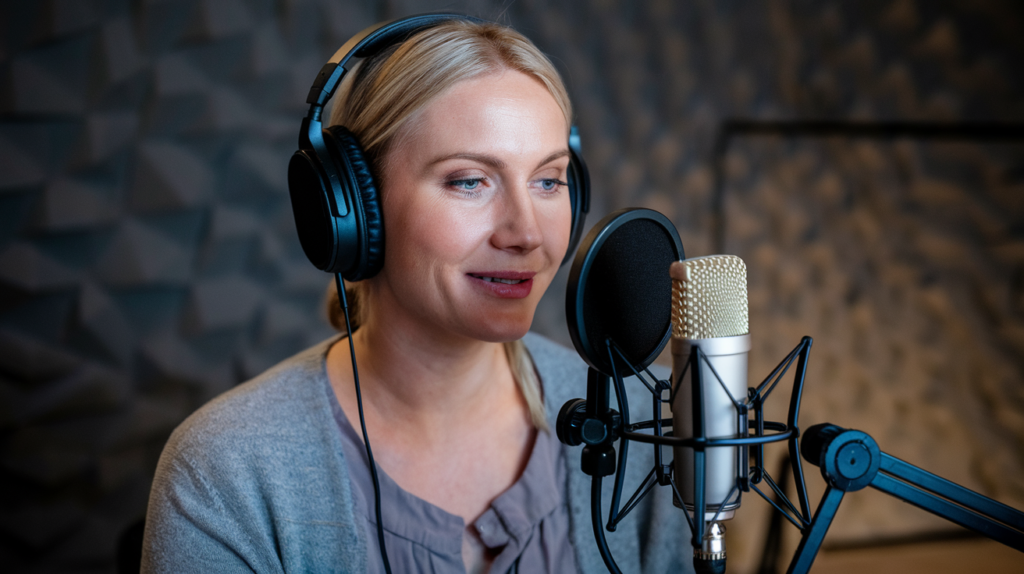Key Takeaways
- Diverse Regional Accents: Australian accents vary significantly across regions, reflecting local culture and history, with notable differences between urban and rural areas.
- Three Main Accents: The major categories of Australian accents are Broad (strong vowel sounds), General (neutral tone), and Cultivated (British-influenced), each serving different social contexts.
- Impact on Voiceover Work: Understanding regional accents is crucial for voiceover talent as it enhances relatability and authenticity in projects aimed at specific audiences.
- Influencing Factors: Historical events, social dynamics, and geographic isolation shape the unique characteristics of each accent, providing rich opportunities for creative professionals.
- Key Regions Analyzed: Southern, Northern, Eastern, and Western accents offer varied influences that can be leveraged in storytelling or marketing efforts to resonate with target demographics.
- Authenticity Matters: Mastering the nuances of these accents ensures effective communication and connection with audiences in various contexts across Australia’s cultural landscape.
Ever wondered why Australians sound so different depending on where they’re from? The regional differences in Australian accents are fascinating and can even leave you scratching your head. From the laid-back tones of Sydney to the distinct drawl of Perth, each accent tells a story about its roots and culture.
Overview of Australian Accents
Australian accents vary significantly across regions, each accent reflecting the local culture and history. You might notice that urban areas like Sydney often feature a more relaxed tone. In contrast, Perth’s accent tends to have a distinct drawl, showcasing a unique blend influenced by its geographical isolation.
In general, three major categories define Australian accents: Broad, General, and Cultivated. The Broad accent is characterized by strong vowel sounds and is often associated with rural backgrounds. The General accent dominates in urban centers and features a more neutral tone that’s easily understood nationwide. The Cultivated accent is less common; it carries influences from British English and is typically found among the upper class or those in professional settings.
These regional differences can impact various fields, including voiceover work. If you’re seeking voiceover talent for projects related to Australia, understanding these nuances becomes vital. For example, selecting a voice artist with the right regional accent can enhance relatability for your target audience.
When considering voiceover actors for an Australian project, think about how the specific accent aligns with your brand’s message. Each region’s unique inflection can resonate differently with listeners—after all, authenticity matters in storytelling! So whether you need someone with that laid-back Sydney vibe or a pronounced Perth drawl, recognizing these variations helps ensure effective communication through voiceovers.
Mastering the landscape of Australian accents opens doors for authentic connections in various contexts—including marketing materials or educational content that requires engaging voiceovers tailored to specific audiences.
Key Regions of Australia
Australia’s diverse regional accents add depth to its cultural landscape. Understanding these accents enhances your ability to connect with audiences, especially in voiceover work.
Southern Accents
Southern accents, primarily found in Tasmania and Victoria, display a distinctive quality. The Tasmanian accent often combines elements of both the Broad and General Australian accents, featuring short vowels and unique intonations. In Victoria, particularly Melbourne, you’ll hear a more neutral tone with subtle influences from British English. These southern variations can evoke warmth and familiarity, making them appealing choices for voice talents aiming to convey relatability.
Northern Accents
Northern accents shine brightly in Queensland and parts of the Northern Territory. The Queensland accent tends to be more relaxed, characterized by elongated vowel sounds that create a friendly atmosphere. In the Northern Territory, influences from Indigenous languages contribute additional layers to the accent. This uniqueness provides rich opportunities for voice artists seeking to capture a laid-back vibe or create authentic characters rooted in regional identity.
Eastern Accents
Eastern Australia includes New South Wales and parts of Queensland. Sydney boasts a General Australian accent that’s widely recognized due to its media presence. However, you’ll still find pockets where the Broad accent thrives among local communities—especially in Western Sydney—showcasing stronger vowel sounds and distinct speech patterns. For voice actors targeting urban markets or storytelling projects set in this region, mastering these nuances aids authenticity.
Western Accents
Western Australia exhibits a range of accents influenced by geography and demographics. Perth’s accent leans toward General Australian but carries hints of drawl similar to American English due to historical migration patterns. Rural areas feature stronger Broad accents marked by unique phonetic traits that reflect community heritage. Voiceover talent can leverage these variations by tailoring their delivery style based on audience expectations or character backgrounds relevant to Western Australian settings.
Understanding these key regions enriches your approach as a creative professional or content creator while enhancing audience engagement through well-crafted voiceovers that resonate authentically across Australia’s vibrant tapestry of dialects.
Factors Influencing Regional Differences
Various factors shape the regional differences in Australian accents, creating a rich tapestry of sound across the continent. Understanding these influences enriches your knowledge, especially if you’re considering voiceover work or looking to connect with diverse audiences.
Historical Influences
Historical events play a crucial role in accent development. Early British colonization introduced various dialects, while waves of immigration brought new languages and influences. For instance, the strong Broad accent often found in rural areas reflects this historical connection to working-class origins. In contrast, urban centers like Sydney developed a more neutral General accent due to their multicultural environments. Recognizing these historical roots can help you appreciate how accents evolved and why they resonate differently with different audiences.
Social Factors
Social dynamics significantly impact how accents are perceived and adopted. Class distinctions often influence speech patterns; for example, the Cultivated accent is typically associated with higher social status or education levels. Additionally, peer groups can reinforce local speech traits, leading to variations even within close geographic areas. If you’re a voice talent aiming for authenticity in your projects, understanding these social nuances will guide you toward choosing an appropriate accent that aligns well with your target audience’s expectations.
Geographic Considerations
Geographic features also contribute to distinct accents across Australia. Isolation in rural communities often leads to stronger traditional pronunciations compared to urban settings where diverse populations intermingle. For instance, northern Queensland showcases relaxed vowel sounds influenced by Indigenous languages and local culture. Meanwhile, Tasmania’s southern accents radiate warmth and familiarity due to its tight-knit communities. As a voice artist or voice actor, being aware of these geographic characteristics allows you to select an accent that resonates authentically with specific regions—enhancing relatability in your voiceovers and storytelling efforts.
By examining historical influences, social factors, and geographic considerations together, you’ll gain deeper insights into Australia’s unique regional accents—a valuable asset when crafting engaging content that speaks directly to your audience’s experiences and backgrounds.
Characteristics of Major Accents
Australian accents vary significantly, reflecting the rich cultural tapestry of the country. Understanding these distinctions is crucial for voice artists seeking to connect authentically with their audiences.
Broad Australian Accent
The Broad Australian accent stands out with its strong vowel sounds and a distinct drawl. It’s often associated with rural backgrounds and conveys a sense of laid-back familiarity. You might notice words like “mate” pronounced with an emphasis that gives it character. This accent’s robust nature can resonate well in storytelling, especially when aiming for a friendly, approachable tone. For voice actors, mastering this accent can enhance relatability in projects targeting regional audiences or rural themes.
General Australian Accent
The General Australian accent serves as the most prevalent and recognized tone across urban centers like Sydney and Melbourne. Its more neutral quality allows for broad appeal, making it ideal for diverse voiceover work. You’ll find this accent smooth and easy to understand, which is essential when conveying clear messages in advertising or educational content. Voice talents often gravitate toward this style due to its versatility; it works well across various genres while maintaining authenticity.
Cultivated Australian Accent
The Cultivated Australian accent reflects influences from British English and is typically found among upper-class speakers or in professional environments. This accent features a refined intonation that suggests sophistication and education. When you hear it, there’s often an elegance that adds depth to narratives aimed at upscale markets or formal presentations. For voiceover artists looking to convey authority or professionalism, mastering the nuances of the Cultivated accent can set your performances apart in competitive fields.
Understanding these major accents will empower you as a voice artist, enhancing your ability to deliver authentic performances tailored to specific audiences across Australia’s diverse landscape.
Conclusion
Exploring the regional differences in Australian accents reveals a rich tapestry of culture and history. Each accent tells its own story shaped by geographic, social, and historical influences. Whether you’re aiming for authenticity in voiceover work or simply appreciate the nuances of language, understanding these accents is essential.
By recognizing the distinct characteristics of Broad, General, and Cultivated accents, you can enhance your communication with diverse audiences. This knowledge not only enriches your storytelling but also fosters deeper connections with listeners across Australia. Embracing these variations allows you to navigate Australia’s vibrant linguistic landscape confidently.
Frequently Asked Questions
What are the main types of Australian accents?
Australian accents can be categorized into three main types: Broad, General, and Cultivated. The Broad accent is often associated with rural backgrounds, featuring strong vowel sounds. The General accent has a more neutral tone common in urban areas, while the Cultivated accent is influenced by British English and typically found among the upper class.
How do regional accents reflect Australian culture?
Regional accents in Australia embody unique cultural roots and histories. For instance, rural areas may have stronger Broad accents that convey familiarity, whereas urban centers like Sydney showcase a more neutral General accent that reflects cultural diversity.
Why is it important to understand Australian accents for voiceover work?
Understanding Australian accents is crucial for voiceover artists as it enhances relatability and authenticity in storytelling. Choosing the right accent allows brands to connect better with their target audiences based on regional characteristics.
How does geography influence Australian accents?
Geography plays a significant role in developing distinct Australian accents. Isolation in rural communities often leads to stronger traditional pronunciations, while urban areas exhibit diverse populations resulting in more neutral or varied speech patterns.
What influences the development of different Australian accents?
Accents develop through various factors including historical events (like British colonization), social dynamics (class distinctions), and geographic considerations (isolation vs. urbanization). These elements shape how individuals adopt and perceive different regional pronunciations.
Are there specific characteristics of northern or southern Australian accents?
Yes! Northern accents, such as those from Queensland and the Northern Territory, feature relaxed vowel sounds influenced by Indigenous languages. Southern accents found in Tasmania and Victoria evoke warmth and familiarity with distinct tonal qualities reflecting local culture.







